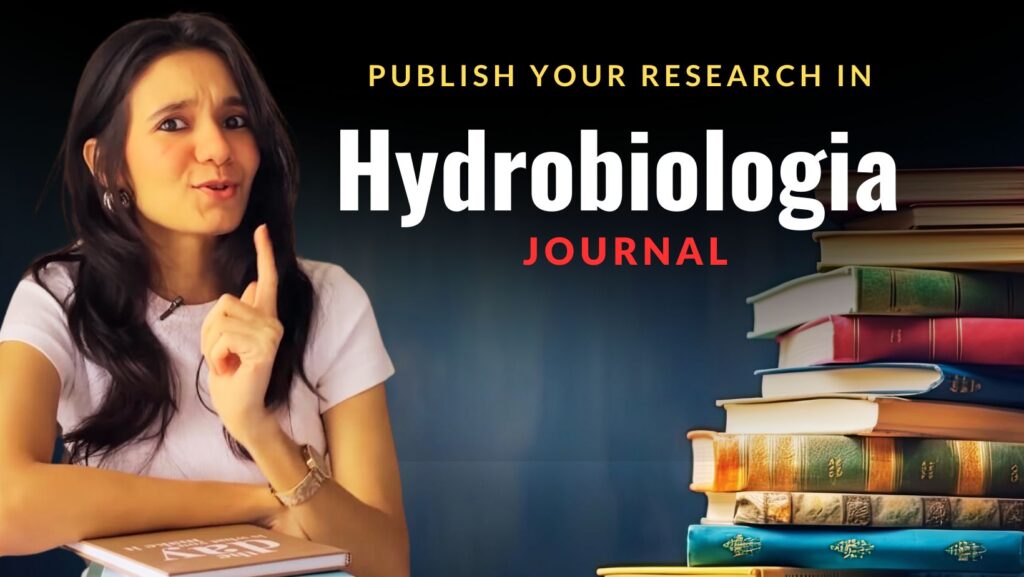Dive into Hydrobiologia – The Leading Journal Need to Know

Hydrobiologia is a well-known journal in the field of aquatic sciences. It covers a broad range of topics related to the biology of aquatic systems. If you’re considering submitting your research to Hydrobiologia, you’ll want to know about its impact factor, publication fees, author guidelines, and other details. Let’s explore these aspects in detail.
Hydrobiologia: Your Ultimate Guide to Publishing Success!
What is Hydrobiologia?
Hydrobiologia is an international journal that publishes high-quality research in aquatic science. This includes studies on freshwater, marine, and brackish environments. The journal covers diverse topics like ecology, conservation, pollution, and management of aquatic ecosystems.
Impact Factor
The impact factor of a journal is a measure of its influence and reputation in the scientific community. As of the latest update in 2024, Hydrobiologia has an impact factor of 2.835.
This means that, on average, articles published in Hydrobiologia are cited 2.835 times within the first two years of publication. An impact factor above 2 is considered good in the field of environmental and aquatic sciences.
Publication Fees
Publishing in Hydrobiologia involves certain costs. These are known as Article Processing Charges (APCs). As of 2024, the APC for Hydrobiologia is around $3,000 USD.
However, this fee can vary depending on factors like the type of article and the length of the paper. It’s important to check the journal’s website for the most current information on publication fees.
Read: Milbank Quarterly’s Rising Impact: What You Need to Know?
Author Guidelines
Submitting a paper to Hydrobiologia requires adherence to specific author guidelines. Here’s a summary of the key points:
- Manuscript Preparation: Manuscripts should be written in clear, concise English. Authors should follow the structure: Title, Abstract, Keywords, Introduction, Methods, Results, Discussion, Conclusions, Acknowledgements, and References.
- Title: The title should be brief and descriptive.
- Abstract: The abstract should not exceed 250 words and must summarize the main findings and significance of the study.
- Keywords: Include 4-6 keywords that accurately represent the content of the paper.
- Figures and Tables: Figures and tables should be clear and labeled appropriately. Each should be mentioned in the text.
- References: References should follow the APA style. All cited works must be listed in the reference section, and vice versa.
Submission Process
To submit your manuscript to Hydrobiologia, follow these steps:
- Prepare Your Manuscript: Follow the author guidelines to prepare your manuscript.
- Register on the Submission Portal: Create an account on the journal’s submission portal.
- Submit Manuscript: Upload your manuscript and any supplementary files.
- Cover Letter: Write a cover letter that briefly explains the significance of your study and why it is suitable for Hydrobiologia.
- Peer Review: After submission, your manuscript will undergo a peer-review process. This typically involves evaluations by 2-3 experts in the field.
- Revision and Resubmission: Based on the reviewers’ comments, you may need to revise your manuscript and resubmit it.
- Acceptance: If your manuscript meets the journal’s standards, it will be accepted for publication.
Abbreviation
The standard abbreviation for Hydrobiologia used in scientific references is Hydrobiologia. It is crucial to use this abbreviation correctly when citing the journal in your work.
Scope and Topics Covered
Hydrobiologia covers a wide range of topics in aquatic sciences, including:
- Aquatic ecology
- Marine biology
- Freshwater biology
- Aquatic botany and zoology
- Limnology (study of inland waters)
- Fisheries science
- Aquatic pollution and conservation
- Wetland science
The journal aims to advance our understanding of aquatic systems and promote the conservation and management of water resources.
Editorial Board
Hydrobiologia’s editorial board consists of experts from around the world. These experts are responsible for the peer-review process and maintaining the journal’s high standards. The editorial board includes:
- Editor-in-Chief: The Editor-in-Chief oversees the entire editorial process.
- Associate Editors: These editors handle specific sections or topics within the journal.
- Editorial Board Members: These are subject-matter experts who assist with the review process and provide guidance on editorial policies.
Why Publish in Hydrobiologia?
Publishing in Hydrobiologia has several advantages:
- High Visibility: The journal is widely read and respected in the aquatic science community.
- Reputation: With a solid impact factor, Hydrobiologia is recognized as a leading journal in its field.
- Comprehensive Coverage: The journal covers a broad range of topics, making it suitable for various types of research in aquatic sciences.
- Peer Review: The rigorous peer-review process ensures the quality and reliability of published articles.
Recent Updates
Keeping up with recent trends and updates in Hydrobiologia is crucial for potential authors. Here are some recent developments:
- Special Issues: Hydrobiologia often publishes special issues on emerging topics in aquatic science. These issues are curated by guest editors and feature invited papers from experts.
- Open Access Options: Authors can choose to make their articles open access for a wider reach. This involves paying an additional fee.
- Online First: Articles are published online before they appear in print, ensuring timely dissemination of research findings.
Summary:
Hydrobiologia is a prestigious journal in the field of aquatic sciences. With a solid impact factor and a comprehensive scope, it offers a great platform for researchers to publish their work. The publication process involves certain fees and strict adherence to author guidelines. By following the guidelines and understanding the submission process, authors can enhance their chances of getting published in Hydrobiologia.
Stay updated with the latest trends and make the most of the opportunities offered by this esteemed journal. Whether you’re an experienced researcher or a new entrant in the field, Hydrobiologia provides a valuable avenue to share your findings with the global scientific community.
